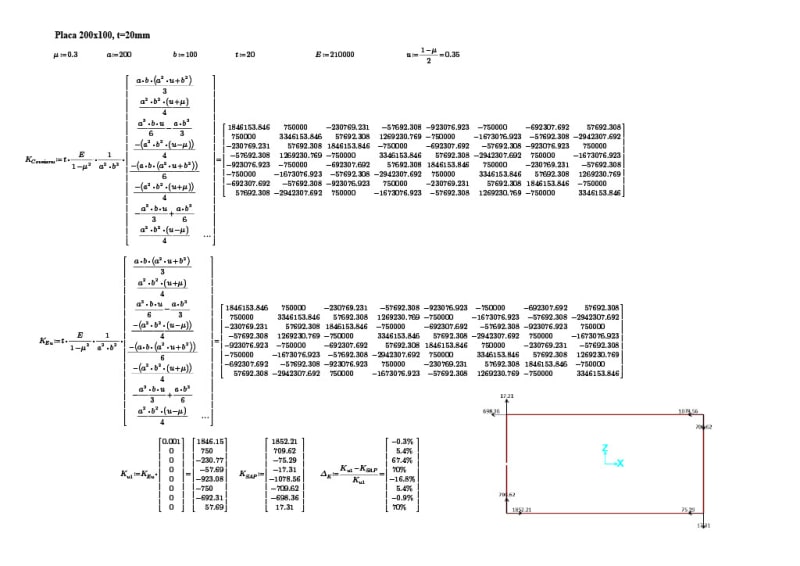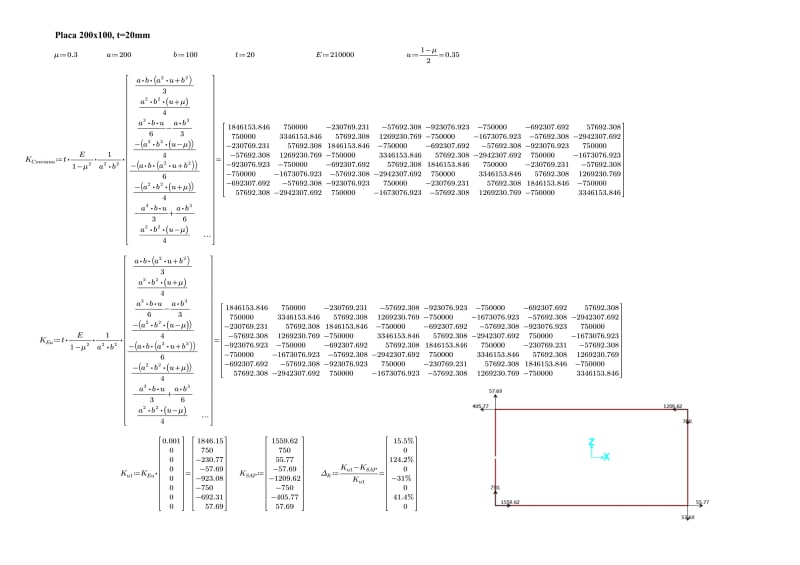GhergheV
Civil/Environmental
- Feb 24, 2022
- 2
Greetings! I am a masters student working on my dissertation thesis and I would like to gather some information about the following topic. The main topic in my thesis will be FEM analysis and my professor suggested to compare the stiffness matrix of an quadrilateral steel plate (20x10x1cm) resulted from SAP2000 in plane analysis and the stiffness matrix generated by hand based on the theory of elasticity. I was expecting for these two matrices to be quite similar for this simple element but the results are a bit strange, as some of most curious of you will find out if they stick around.
Context:
Finite element: rectangular element with l:h ratio of 2:1, 4 nodes with two DOF in each node (ux, uy)
For the manually derived stiffness matrix I used two approaches for the axis system and the result was exactly the same, as expected and confirmed by the book used as guide.
Shape/interpolation functions used were linear and with the following form: u(x,y) = C0 + C1x + C2y + C3xy
As a comparison I had run two in plane models in SAP2000 one with UX and UY Degrees of freedom and the other one with UX, UY and RZ (from SAP analysis options).
Below you can see the results. The stiffness matrix from SAP200 was generated for a load case of 1mm displacement of node 1. Notations: KCoveianu = KEu = manually generated stiffness matrices starting from two different positions of the axis system. KSAP = stiffness matrix from SAP2000 resulted as nodal reactions in the simple case of 1mm displacement of node 1.
I am looking forward for any response and suggestions in regards with my finding in this comparison. In my opinion the differences are quite large in some points. I am also pretty sure that SAP2000 doesn`t use linear interpolation functions.


Cheers!
